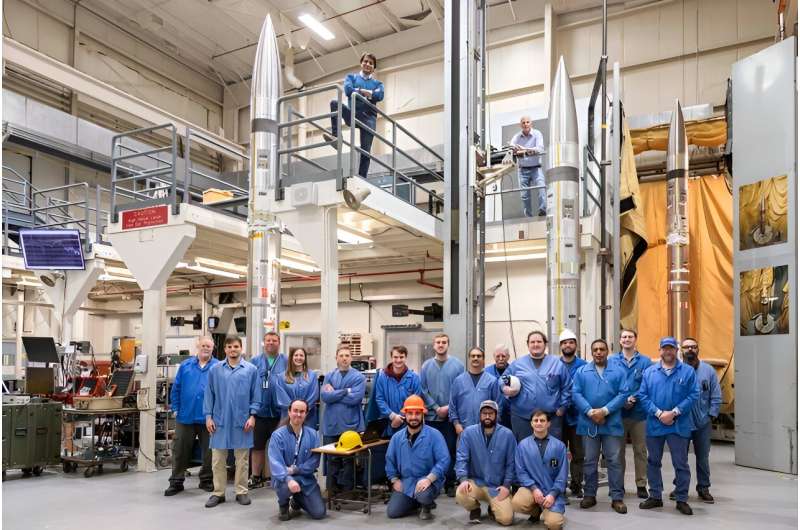They have been refurbished with new instrumentation and will be relaunched in April 2024. The mission is led by Aroh Barjatya, a professor of engineering physics at Embry-Riddle Aeronautical University in Florida, where he directs the Space and Atmospheric Instrumentation Lab.
The sounding rockets will launch at three different times: 45 minutes before, during, and 45 minutes after the peak local eclipse. These intervals are important to collect data on how the sun's sudden disappearance affects the ionosphere, creating disturbances that have the potential to interfere with our communications.
The ionosphere is a region of Earth's atmosphere that is between 55 to 310 miles (90 to 500 kilometers) above the ground. "It's an electrified region that reflects and refracts radio signals and also impacts satellite communications as the signals pass through," said Barjatya. "Understanding the ionosphere and developing models to help us predict disturbances is crucial to making sure our increasingly communication-dependent world operates smoothly."
The ionosphere forms the boundary between Earth's lower atmosphere—where we live and breathe—and the vacuum of space. It is made up of a sea of particles that become ionized, or electrically charged, from the sun's energy or solar radiation.
When night falls, the ionosphere thins out as previously ionized particles relax and recombine back into neutral particles. However, Earth's terrestrial weather and space weather can impact these particles, making it a dynamic region and difficult to know what the ionosphere will be like at a given time.
It's often difficult to study short-term changes in the ionosphere during an eclipse with satellites because they may not be at the right place or time to cross the eclipse path. Since the exact date and times of the total solar eclipse are known, NASA can launch targeted sounding rockets to study the effects of the eclipse at the right time and at all altitudes of the ionosphere.
As the eclipse shadow races through the atmosphere, it creates a rapid, localized sunset that triggers large-scale atmospheric waves and small-scale disturbances or perturbations. These perturbations affect different radio communication frequencies. Gathering the data on these perturbations will help scientists validate and improve current models that help predict potential disturbances to our communications, especially high-frequency communication.
The APEP rockets are expected to reach a maximum altitude of 260 miles (420 kilometers). Each rocket will measure charged and neutral particle density and surrounding electric and magnetic fields. "Each rocket will eject four secondary instruments the size of a two-liter soda bottle that also measure the same data points, so it's similar to results from fifteen rockets while only launching three," explained Barjatya. Embry-Riddle built three secondary instruments on each rocket, and the fourth one was built at Dartmouth College in New Hampshire.
In addition to the rockets, several teams across the U.S. will also be taking measurements of the ionosphere by various means. A team of students from Embry-Riddle will deploy a series of high-altitude balloons. Co-investigators from the Massachusetts Institute of Technology's Haystack Observatory in Massachusetts and the Air Force Research Laboratory in New Mexico will operate a variety of ground-based radars taking measurements.
Using this data, a team of scientists from Embry-Riddle and Johns Hopkins University Applied Physics Laboratory are refining existing models. Together, these various investigations will help provide the puzzle pieces needed to see the bigger picture of ionospheric dynamics.
When the APEP-sounding rockets launched during the 2023 annular solar eclipse, scientists saw a sharp reduction in the density of charged particles as the annular eclipse shadow passed over the atmosphere.
"We saw the perturbations capable of affecting radio communications in the second and third rockets, but not during the first rocket that was before peak local eclipse," said Barjatya. "We are super excited to relaunch them during the total eclipse to see if the perturbations start at the same altitude and if their magnitude and scale remain the same."
The next total solar eclipse over the contiguous U.S. is not until 2044, so these experiments are a rare opportunity for scientists to collect crucial data.
Provided by NASA



